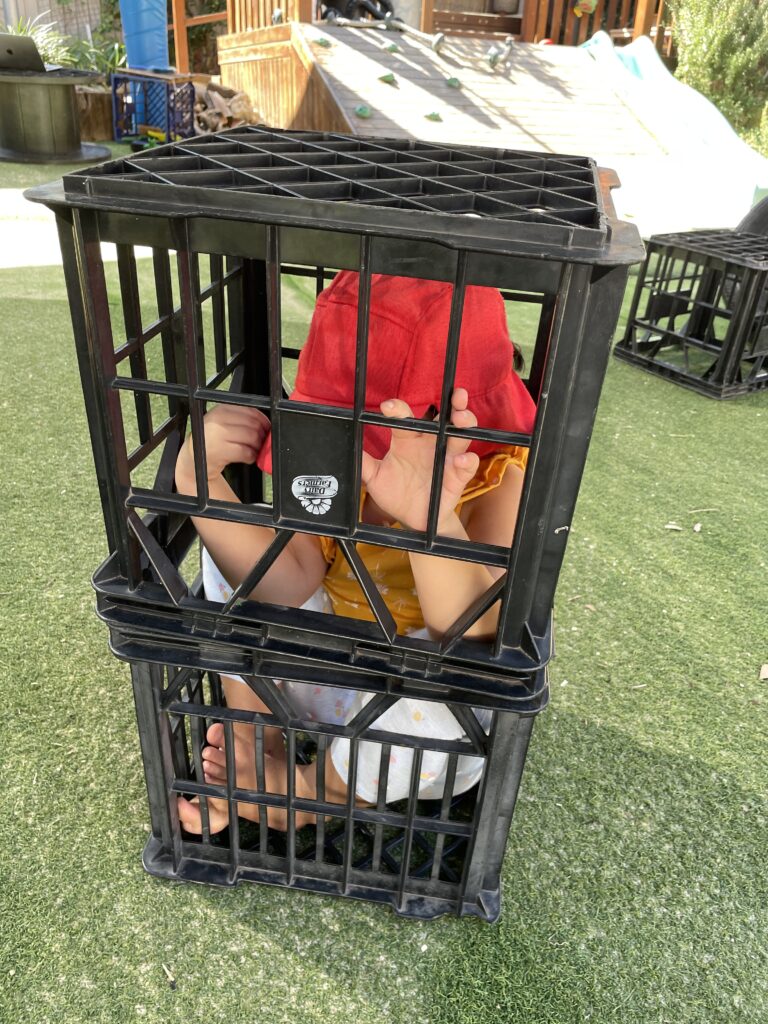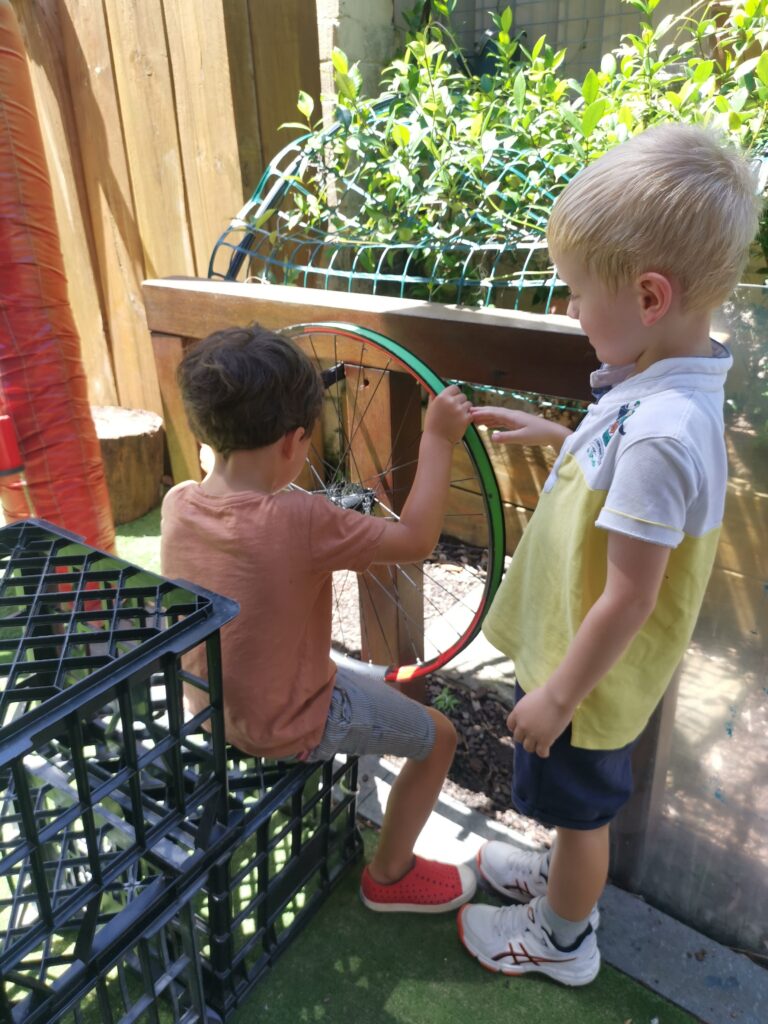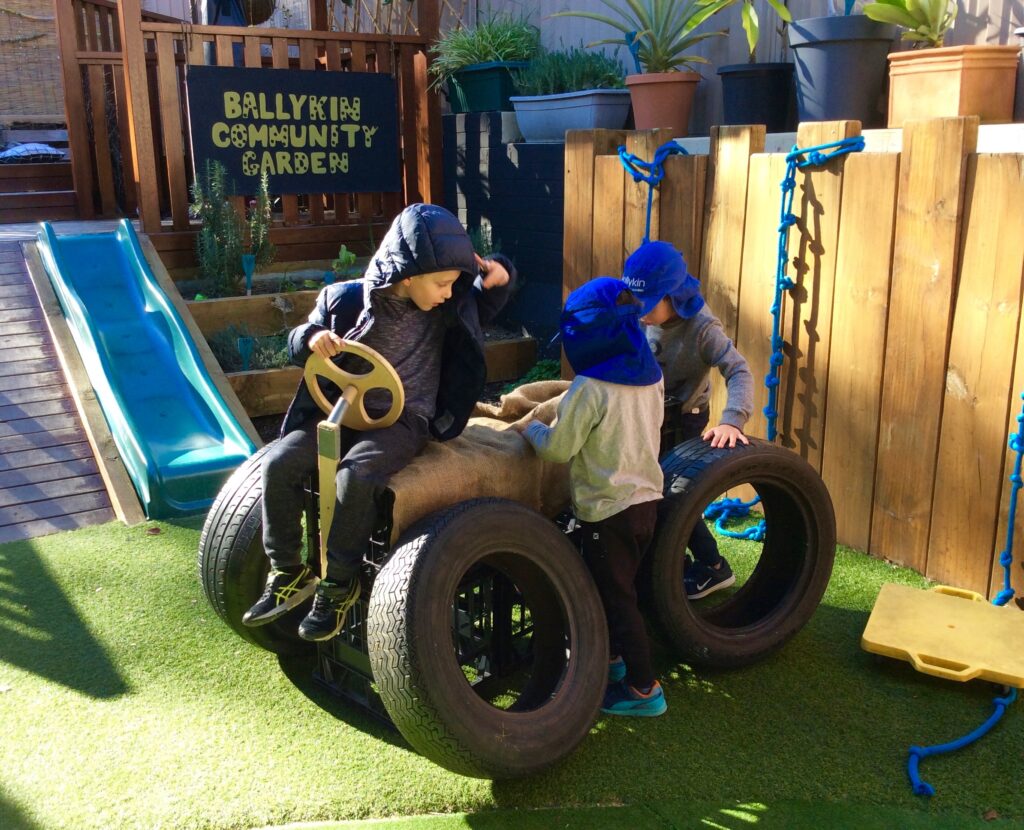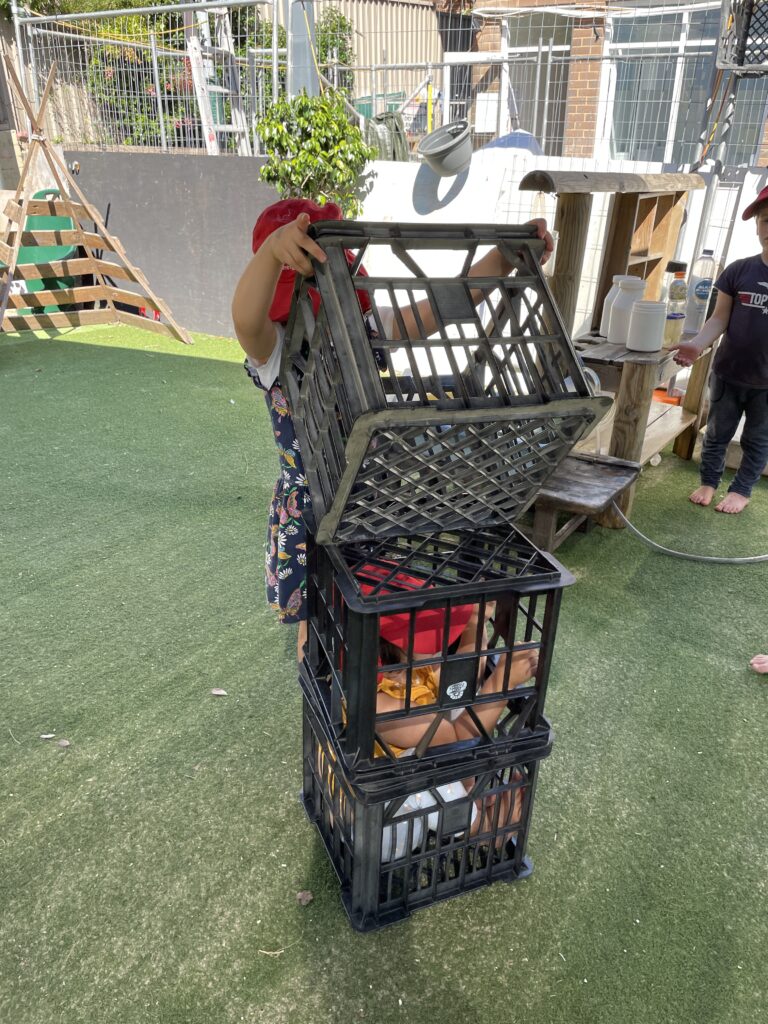Exploring the playful potential of this oversized building blocks.
When we take a look at a milk crate usually we don’t see anything beyond its storage capacity. But, the cheap, sturdy and apparently ordinary material is incredibly versatile and full of creative possibilities!
When I first discovered this remarkable material, I recognised its potential, but I could never have imagined the countless innovative ways that children would come up it into their play. Their creativity and ingenuity is boundless!
Working as an oversized building block, milk crates allow children to explore many schemas at playtime. Building structures that allow them to stand on it from different heights, get inside- fitting a few children at same time, walk across them, carry and move stuff all the while, having lots of fun!
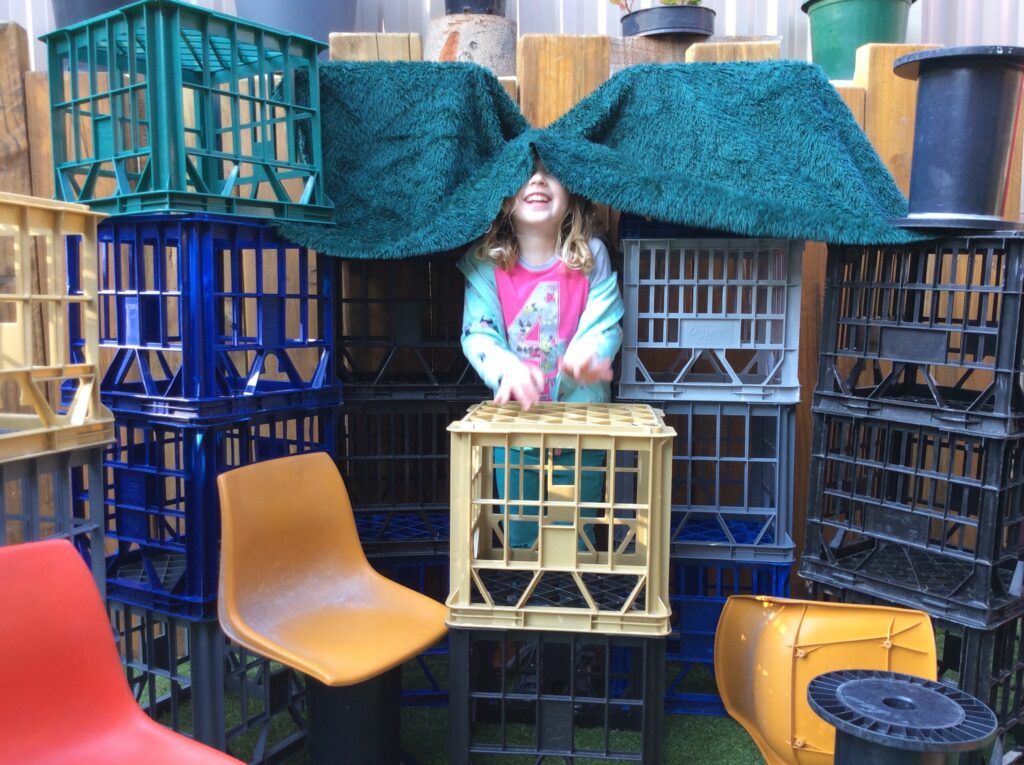
Since they have been incorporated in my provisions, milk crates have been supplying endless fuel to children’s inventiveness and imagination.
This versatile material not only invites but also challenges our ingenious and resourceful creators, who discover on the crates an incredible source of stimulation to their boundless disposition to play and experiment.
How many ways can we use a milk crate?
Indoors
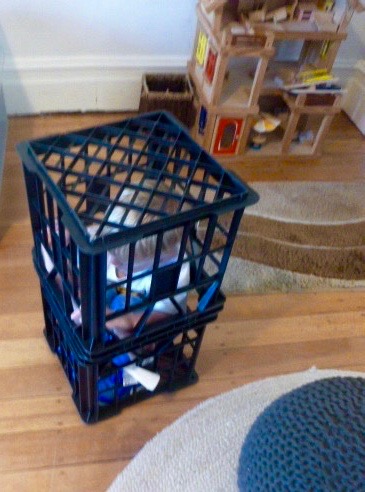
Cages for wild animals
What could you do to make sure snakes and other wild animals are not on the loose at school? You put them in cages! The children love the idea of being inside the crates pretending to be wild animals. The limited space ignites excitement for children exploring schemas of enclosure. The super simple yet highly appealing construction was the first surprising use the children presented when using the crates. After that they just got more and more ingenious..
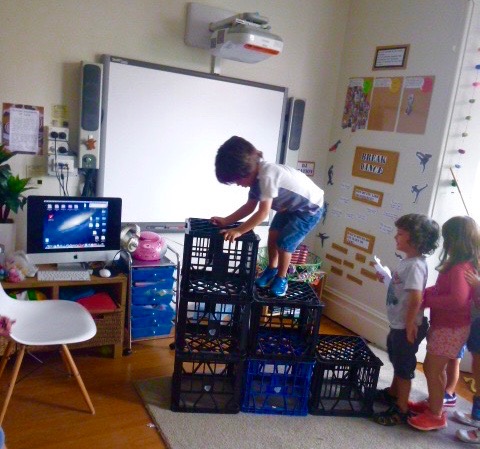
Standing on the top of the crates was the next exploratory idea. The next thing was to use them to gain even more height and to try to touch the ceiling using a sticks. They tried that for a while without much success. Until one of our engineers cleverly came up with the brilliant idea to pile them up, making stairs using the crates as platform to poke the high ceiling. The construction was cleverly done, piling the crates in a crescent order from one to three creating steps to achieve height. It was challenging and thrilling to go up and it has been a hit ever since- the stairway to the ceiling.
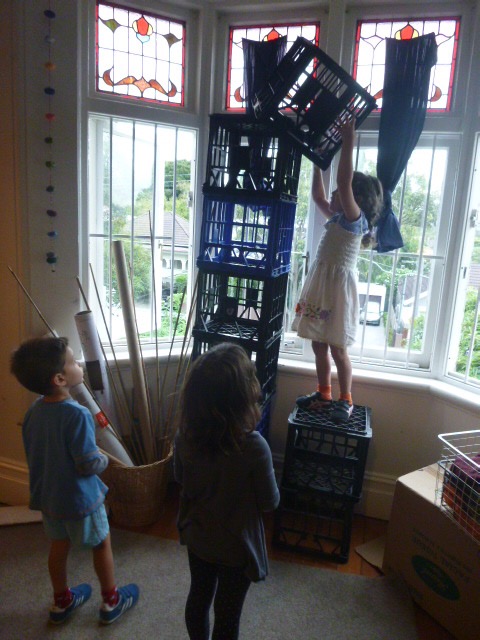
The crates did not just offer delightful provocations during play but also at pack away time. To reset the play area for another group we usually stack the crates to the side. Storing them in our spare parts corner, revealed to be another fun activity when the children set the challenge to make the tallest tower of them all. How can we do it? It was the question that intrigued them until someone figured out that the solution was to join forces! While two children lifted the top crate, another one placed the last in the middle instead of the top. Great solution and cooperation!
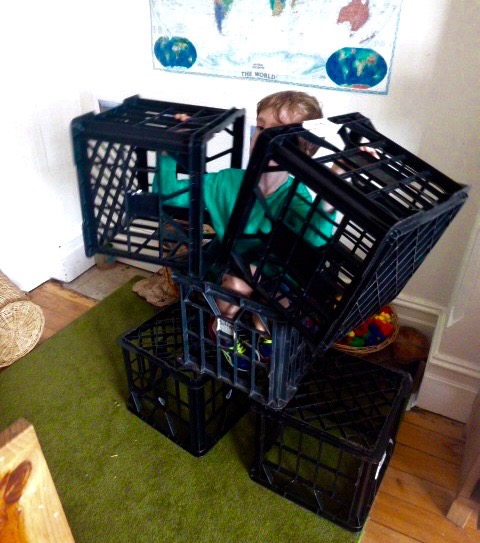
Children saw the resemblance of robot parts in the crates cubical features. Of course, why not? Then they started to make cool robot wearable suits that attracted a few keen candidates to try it on…
Outdoors
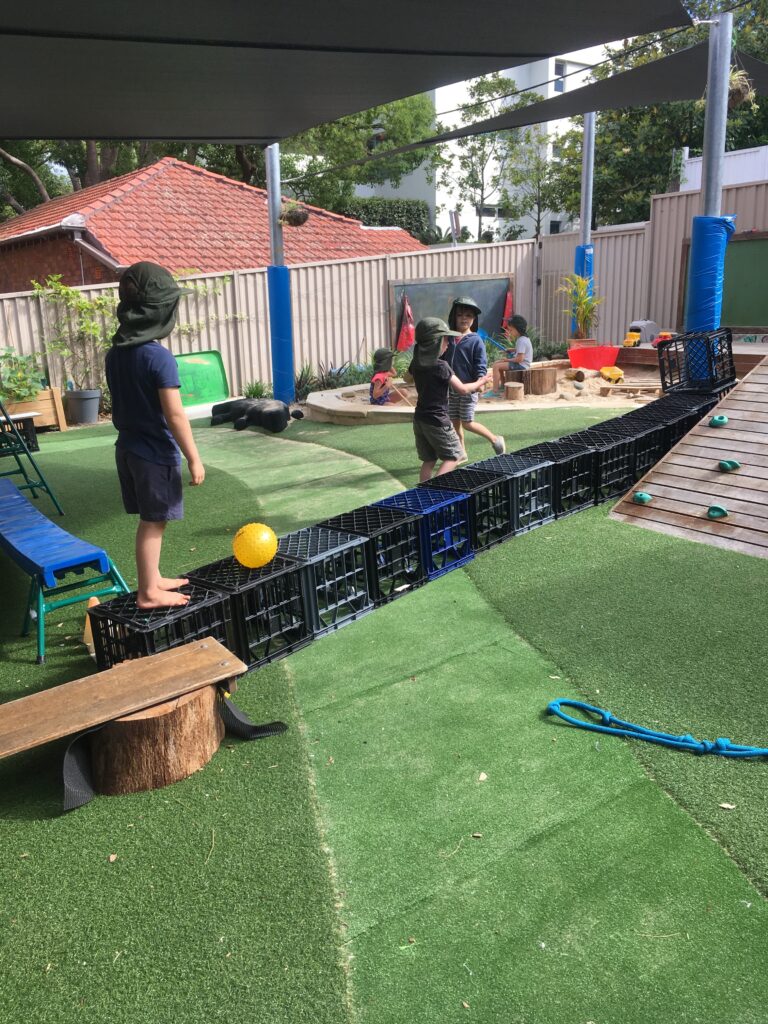
Platforms
Outside children use the milk crates to make platforms to serve as a base for jumps, catwalks, stages, balance beams, walking paths and ball runs.
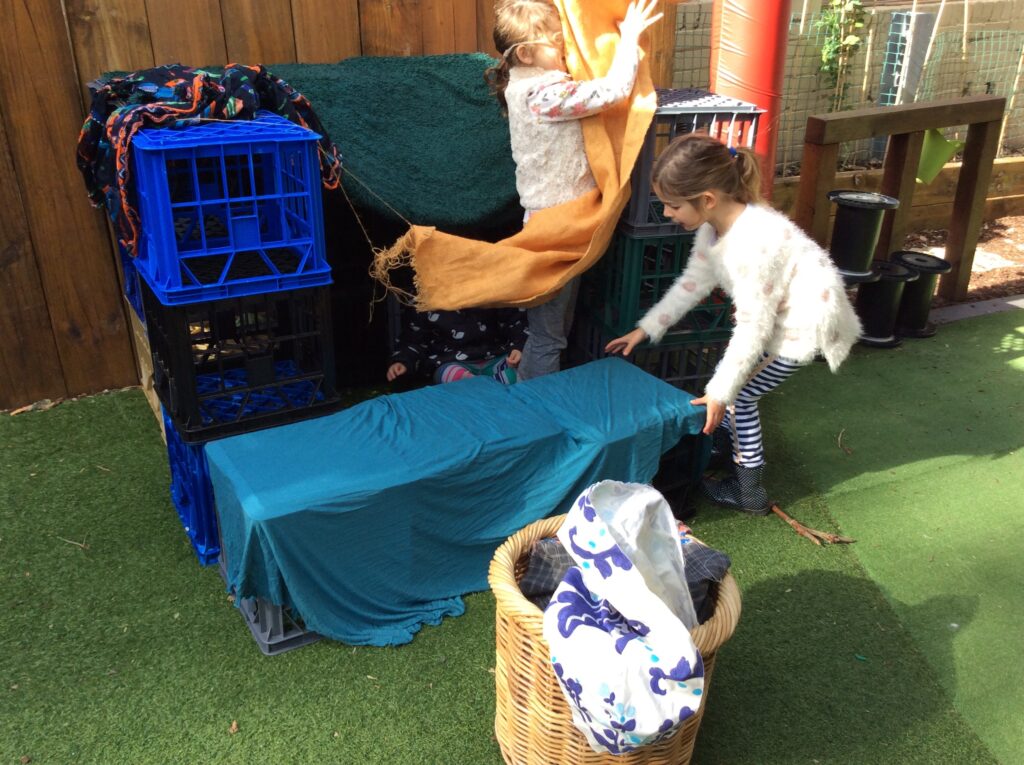
Cubby houses
Building cubby houses combining the crates and fabric has been another fantastic way to use them. Here, the material encourage lots of team work and cooperative play as it requires extra hands to put the structures up.
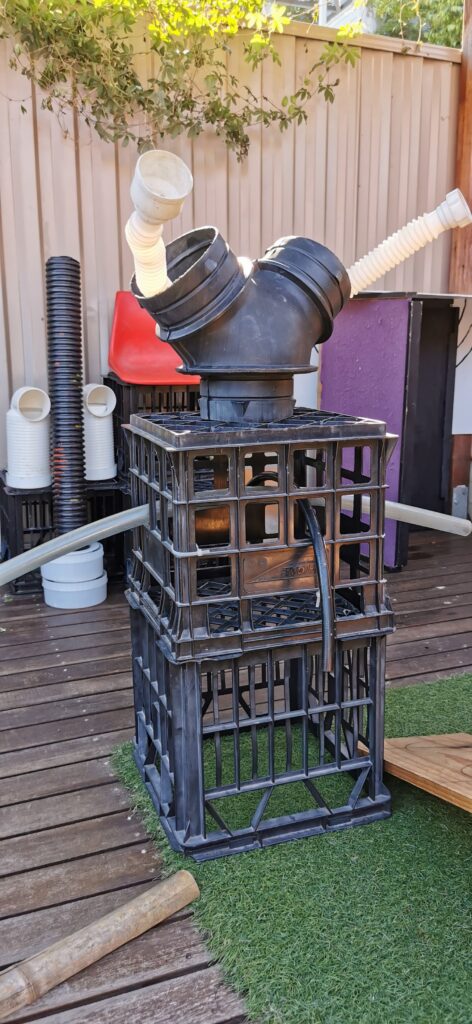
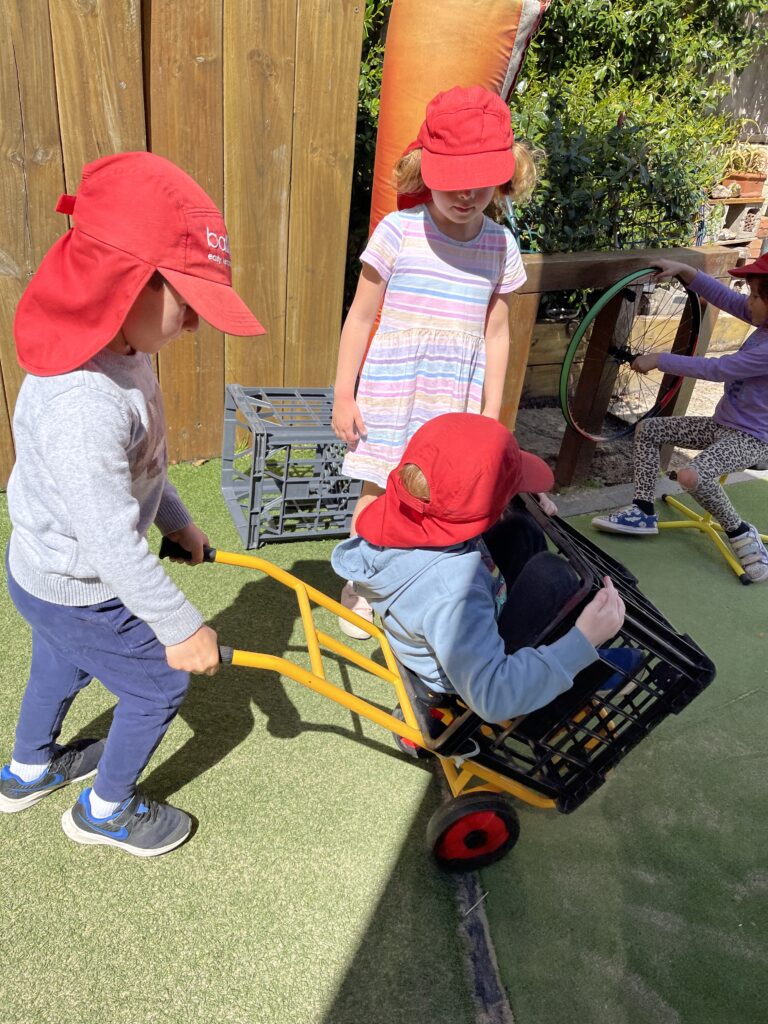
Transport to take us anywhere
Of course the crates also can be turned into any sort of transport from cars to boats, airplanes to rocket ships. Either way it is certainly a guarantee of fun and laughter all the way.
What learning do milk crates deliver?
There is so much learning in milk crates explorations! The children are not just exercising their creativity and imagination by coming up with all of these great play ideas but also using thinking skills such as, trial and error, experimentation and problem solving while they are testing concepts and ideas and transferring knowledge from one experiment to another.
Another remarkable feature of the crates is that they prompt children to assess and manage risks based on their desired construction projects. During these instances, we have a valuable opportunity to engage in reflections on cause and effect, as well as the safety considerations involved in various types of constructions. Meaningful discussions with peers and educators on risk minimisation become crucial stages in the process of each creation, ensuring the safety and well-being of all participants.
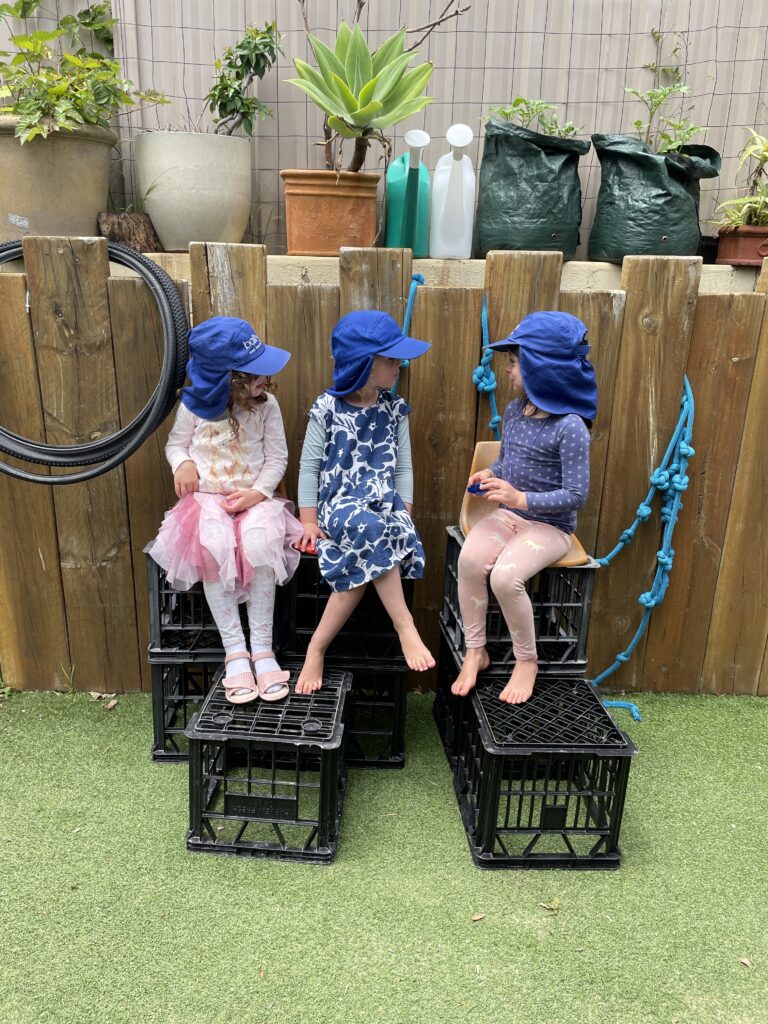
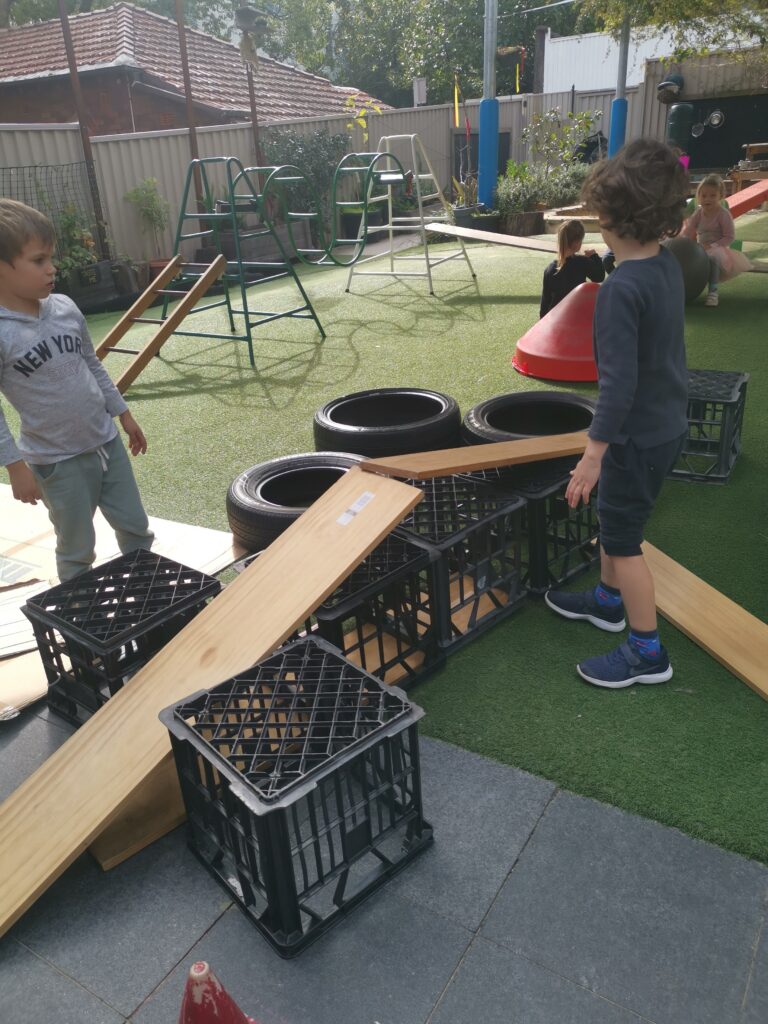
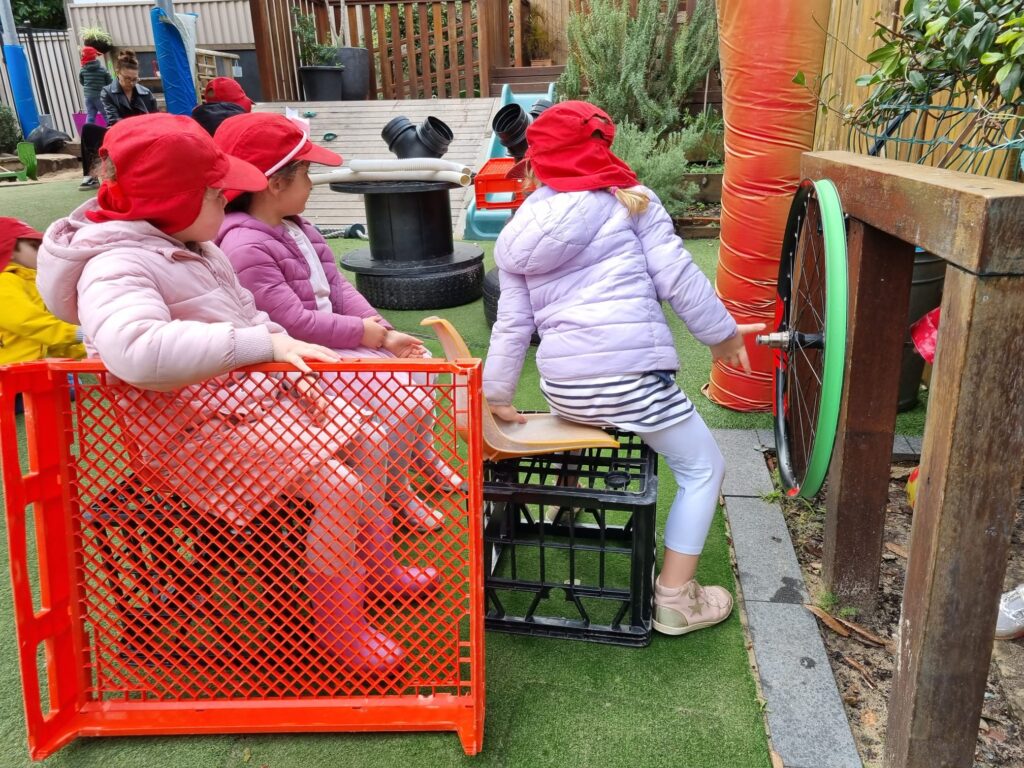
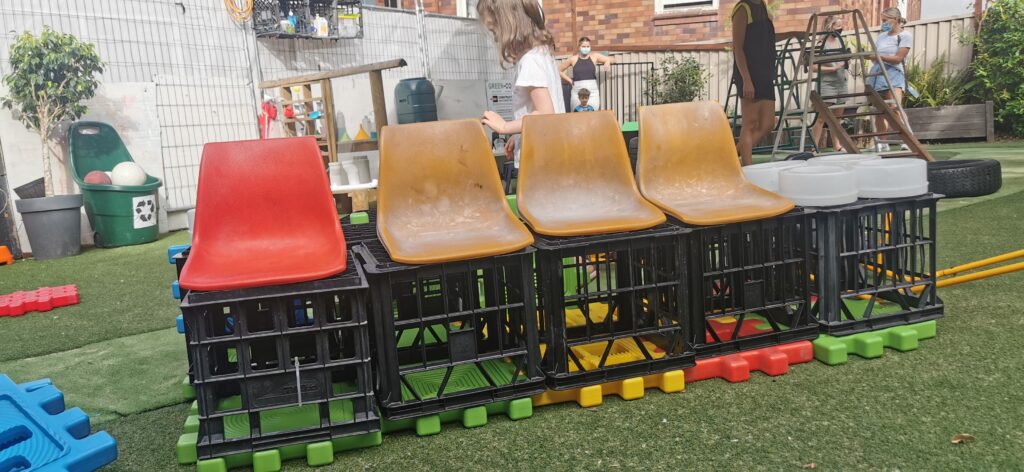
Milk crate play naturally leads to STEM concepts. Further still, weight, height, motion, geometry, and gravity were just some of the concepts that have been explored with this fantastic material.
On the social side there is lots of teamwork, cooperation, negotiation, sharing, leading, convincing, sharing ideas and information and most importantly having a great time together. As we know in all types of play that children are highly motivated by, the desire for cooperation and communication is higher. This is because in play with high engagement, there are likely to be several agents that need to reconcile their determinations, creative ideas and thoughts making the area a fertile ground for social interaction and skill development.
